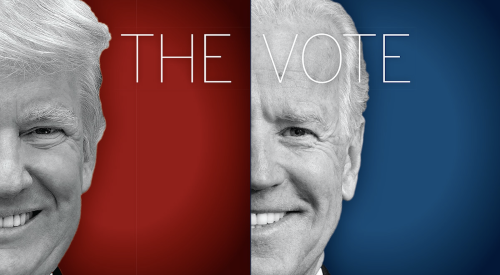|
The 2008 Presidential election is breaking barriers. Both a woman and a black man are top contenders; for the first time since 1928, there is no incumbent or sitting vice president in the race. Both parties are agreeing: we need change.
But as uncommon as this election may be, will the fortunes of home builders under the new administration be business as usual? And what, if anything, do candidates plan to do to address the concerns of home builders?
We did some research and talked to some political pundits both within and outside the housing industry to get a pulse on which party might most benefit the housing industry.
The voice of the industry is quiet on this oneA logical place to search for answers is NAHB, the advocacy group for the home building industry. But the NAHB as a matter of policy does not endorse a particular candidate.
"We are fond of saying that we are neither a Republican nor Democratic organization," says Bill Kilmer, vice president of advocacy for NAHB. "We're for candidates that are pro housing. We've got such a broad span of policy, and this is such a heavily regulated industry at the local state and federal levels. We've got policy that allows us to work with either party that's in power."
Kilmer also says NAHB has not kept any statistical data on how the housing industry and the policies they support have fared under Republican versus Democratic administrations.
|
Home builders: Long-term contribution trends |
 |
 |
|
A look at the long-term contribution trends of home builders shows they have consistently given more to Republicans than Democrats by at least a 2-1 ratio, according to data published by the Center for Responsive Politics. |
"We're not going to have a preference one way or another as an association on behalf of the industry," says Kilmer, "but certainly our members exercise their preferences pretty robustly and work fairly vigorously among themselves to mobilize that support," surmising that there are Builders for Clinton, Builders for Obama, McCain, etc., throughout NAHB's membership.
Follow the money trailKilmer's comments are politically correct, but what do the numbers say? Contributions from NAHB's political action committee slightly favor Republican congressional candidates so far in the 2008 election cycle; 45 percent of contributions went to Democrats and 55 percent to Republicans. But when you look at the long-term contribution trends of home builders — a group that as a whole contributed $9.1 million to federal parties and candidates in 2006 (NAHB, the industry's top contributor, gave $2.7 million during that election cycle) — it has consistently given more to Republicans than Democrats by at least a 2- 1 ratio, according to data published by the Center for Responsive Politics. In election cycle 2004 (see graph on the right), federal contributions to Republicans were 78 percent versus 22 percent for Democrats — a 4-1 ratio.
These numbers make a convincing case that the average home builder thinks Republicans best represent his or her interests.
"From a broad perspective, home building tends to fair better when we have a more conservative type of government regulation, and that has traditionally followed with Republicans," says David Reemsynder, president and CEO of HHHunt Homes in Blacksburg, Va. "It supports less government in that arena rather than more."
But looking at the building industry from the labor perspective, the numbers fall a bit differently. Long-term contribution trends for building trade unions show contributions to Democratic candidates far outweigh those to Republicans. Since 1990 this group has donated a minimum of 84 percent to Democrats every election cycle, and during the 1994 cycle it was a whopping 96 percent.
ANCILLARY ISSUES THAT AFFECT HOUSING
A jolt to the economy may reverse housing's fortunes, but other issues also affect home builders in
| Building trade unions: Long-term contribution trends |
 |
 |
| Long-term contribution trends for building trade unions show constributions to Democratic candidates far outweight those to Republicans, according to data published by the Center for Responsive Politics. |
Subprime providers thrived in large part due to statute limitations that kept the Federal Housing Administration from offering better loan options to high-risk borrowers. To make FHA loans more appealing, the Expanding American Homeownership Act of 2007 was passed by the House of Representatives in September and is in committee with the Senate as of this writing.
Home builders should fear an increase in foreclosures.
"You want to reduce foreclosures and delinquencies as much as possible so you don't put more homes on the market," says John McIlwain, senior resident fellow and J. Ronald Terwilliger Chair for Housing at the Urban Land Institute. "Most of those people who get foreclosed aren't able to now buy a home."
"Looking back at the history, I think that the Democrats would be more inclined to reform FHA than Republicans would," says William H. Hudnut III, senior resident fellow and Joseph C. Canizaro Chair for Public Policy at the Urban Land Institute. "It seems as though the Republicans have given relative short shrift to HUD (FHA is, of course, a HUD program)." Hudnut is also a former Republican Congressman and Mayor of Indianapolis.
"I think both parties are going to be pretty tough on the mortgage banking industry," says McIlwain. "Ultimately Democrats may be a little bit tougher than the Republicans, but I would think either one would work hard to put some new controls over it."
Tax incentives for home buyersRep. John Dingell, D-Mich., chairman of the House Committee on Energy and Commerce, proposed a bill to eliminate mortgage interest deductions for homes larger than 3,000 square feet — considered prime offenders in the production of green house gas emissions. But NAHB wants to see existing tax incentives for home buyers protected.
|
"We're for candidates that are pro housing ... We've got policy that allows us to work with either party that's in power." |
Kilmer warns that the leadership of some Democratic tax writing committees has made expensive propositions — such as the reformation of the Alternative Minimum Tax — that would require funding, and that they might feel pressure to tinker with housing tax incentives to pay for that.
Is there a green party?NAHB rolled out its proposed National Green Building Standard at last month's International Builders' Show. While NAHB backs green building, it is fighting mandates it believes would be required if the U.S. Green Building Council's LEED for Homes program — which is being considered and adopted in various municipalities and regions — is adopted nationally.
Reemsynder thinks industry stewardship will be adequate over the long term to get green standards implemented, but if the government doesn't move quickly enough, "I suspect Democrats would try to speed it up," he says.
McIlwain doesn't think Congress will issue a national green building mandate. He does think Democrats tend to be more open to the idea of energy conservation.
"The Democrats traditionally have been more active in providing [tax] incentives for things like solar and wind," says McIlwain. "And energy is going to become an increasingly large issue for builders. It's going to drive up their costs, and will it shift the market. People will start looking for ... greener homes with reduced energy usage. It's hard to know at this point where a Republican administration would be on this. But they have traditionally been more hands off."
The immigration hot potatoImmigrants — both legal and illegal — have a great impact on the home building industry. Projections are that immigrants and minorities will increase their ownership of homes in the next 10 years. And it cannot be overlooked that a large part of the construction labor force comes from this group as well.
Hudnut says it's difficult to distinguish between the two parties on this issue:
"Both have taken the very short-sighted view that panders to people's fears and emotions," Hudnut says. "I think [President] George Bush was right on this issue with his recommendation for, I don't want to call it amnesty, but earned citizenship — giving them a chance versus hounding them out of the community. ... Immigrants are part of the glue that holds our economy together."
In the interest of full disclosure, William H. Hudnut III has run and served as a Republican during his entire life of public service. He good naturedly refers to his Urban Land Institute colleague, John McIlwain, as a "rabid Democrat."
| Election Cycle | Total Contributions | Donations to Democrats | Donations to Republicans | % to Dems | % to Repubs |
| 2008* | $4,175,678 | $1,432,419 | $2,743,009 | 34% | 66% |
| 2006* | $9,061,752 | $2,145,268 | $6,876,384 | 24% | 76% |
| 2004* | $10,185,218 | $2,219,016 | $7,952,452 | 22% | 78% |
| 2002 | $5,916,408 | $1,700,395 | $4,209,574 | 29% | 71% |
| 2000 | $7,562,860 | $2,404,144 | $5,137,666 | 32% | 68% |
| 1998 | $5,398,340 | $1,660,370 | $3,728,470 | 31% | 69% |
| 1996 | $4,558,488 | $1,559,807 | $2,994,081 | 34% | 66% |
| 1994 | $3,314,872 | $1,373,448 | $1,928,104 | 41% | 58% |
| 1992 | $3,211,899 | $1,284,268 | $1,924,481 | 40% | 60% |
| 1990 | $2,312,939 | $1,022,775 | $1,290,164 | 44% | 56% |
| Total | $55,698,454 | $16,801,910 | $38,784,385 | 30% | 70% |
| *The asterisked figures on this page and page 30 do not include donations of "Levin" funds to state and local party committees. Levin funds were created by the Bipartisan Campaign Reform Act of 2002. Also, the numbers on this page and page 30 are based on contributions of $200 or more from PACs and individuals to federal candidates and from PAC, soft money and individual donors to political parties, as reported to the Federal Election Commission. Although election cycles are shown in charts as 1996, 1998, 2000, etc. they actually represent two-year periods. For example, the 2002 election cycle runs from Jan. 1, 2001 to Dec. 31, 2002. | |||||
| Election Cycle | Total Contributions | Donations to Democrats | Donations to Republicans | % to Dems | % to Repubs |
| 2008* | $7,088,985 | $6,323,285 | $760,700 | 89% | 11% |
| 2006* | $16,834,138 | $14,095,273 | $2,619,265 | 84% | 16% |
| 2004* | $13,497,898 | $11,816,569 | $1,655,329 | 88% | 12% |
| 2002 | $21,476,567 | $19,883,952 | $1,550,615 | 93% | 7% |
| 2000 | $18,399,318 | $17,393,632 | $960,486 | 95% | 5% |
| 1998 | $9,254,531 | $8,511,507 | $712,774 | 92% | 8% |
| 1996 | $10,797,678 | $10,245,171 | $515,390 | 95% | 5% |
| 1994 | $7,500,691 | $7,195,305 | $277,787 | 96% | 4% |
| 1992 | $8,357,490 | $7,832,859 | $408,581 | 94% | 5% |
| 1990 | $7,038,525 | $6,658,637 | $361,888 | 95% | 5% |
| Total | $120,245,821 | $109,956,190 | $9,822,815 | 91% | 8% |
|











